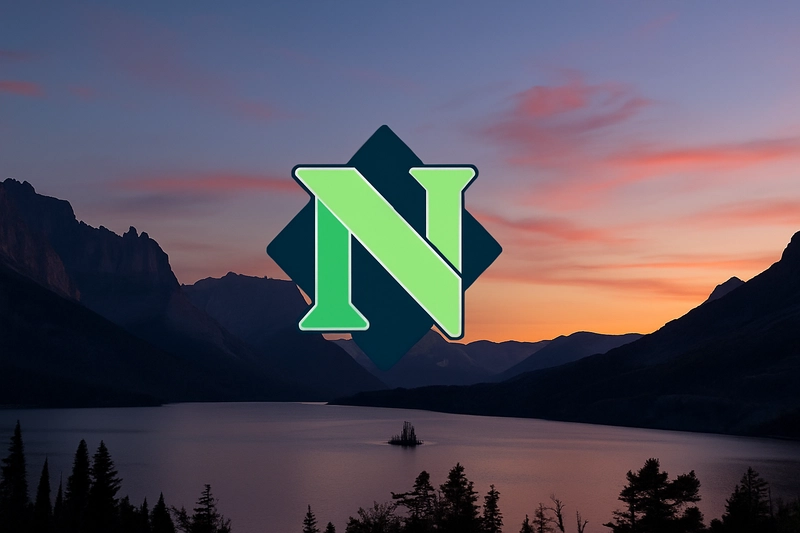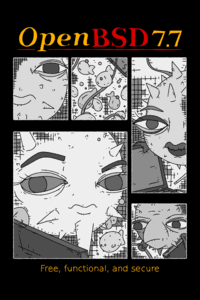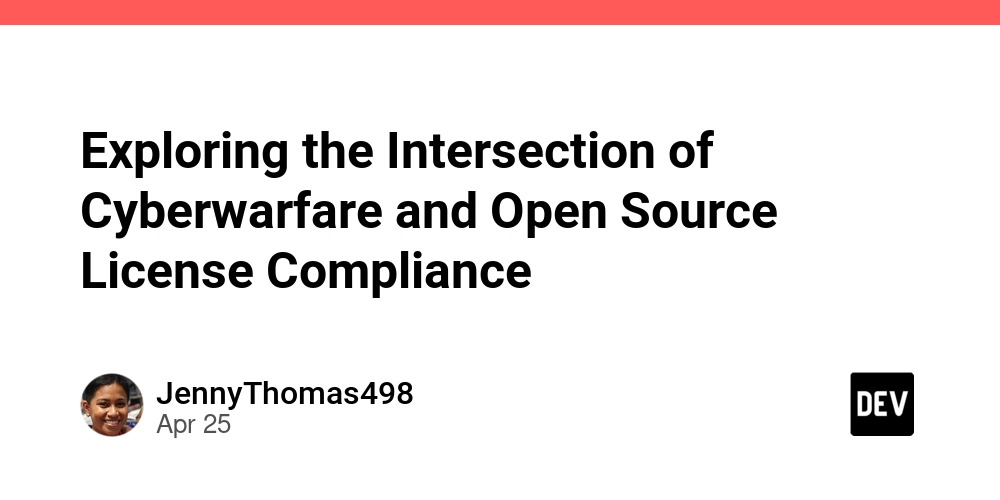Why You Should Migrate to NeoVim
Background I've been programming since 2004, and my journey began right inside the banking sector. Back then, my days were filled with Perl scripts — using Interwoven Templates — and plenty of JavaScript to bring life to web frontends. It was a different world: heavy systems, strict environments, tools that demanded real discipline. During that time, I worked with VI and other classic tools that forced you to know exactly what you were doing. There were no "autocompletes" or "friendly interfaces" to save you. It was raw, and in some ways, it built the foundation I stand on today. As time passed, PHP entered my life and became a strong focus. I dabbled with other languages when needed, but PHP remained central. I explored IDEs, one after another — Eclipse, NetBeans — until I found my home for a long time: PhpStorm. Without exaggeration, PhpStorm boosted my work, sharpened my delivery, and opened a new chapter for me as a developer. If you're still on VSCode today, let me offer some honest advice: consider trying NeoVim or PhpStorm. Both can change the way you feel about building software. The Turning Point: Speed and Workflow Managing several projects simultaneously started exposing cracks in my workflow. Even the mighty PhpStorm, with all its power, couldn't fully hide the latency creeping in when things got too heavy. At different moments, I tried moving to Vim and later NeoVim. I failed a few times. And if you try, you might fail too — at least at first. That's okay. You need at least a month — a real, honest month — to migrate properly: Your speed will drop. You will doubt yourself. You'll want to give up. But migration isn't some mystical leap. It's a strategy. It's an act of patience and adaptation. Some practical advice to ease the path: Start by using Vim keybindings inside your IDE (e.g., IdeaVim in JetBrains). Get comfortable progressively, not all at once. Explore NeoVim's configuration files and slowly make them your own. Embrace Lua — the quiet power behind NeoVim's modern capabilities (and a proud Brazilian export from PUC-RJ!). Why Choose NeoVim? Because it demands something precious: understanding. You have to learn how your environment is structured: How each tool plugs into the bigger picture. How workflows aren't accidents — they're systems you consciously create. When you step away from relying on the mouse and move into a world of pure keyboard-driven navigation, something strange happens: you start thinking differently. Your code becomes an extension of your hands, and your focus deepens. It’s not faster just for the sake of speed. It’s faster because it’s closer to you. Maximizing Focus and Brain Efficiency Context-switching kills focus. Every time you switch apps — jumping from an IDE to Postman, to FileZilla, to the terminal — your brain spends energy adapting to new visual contexts. In a terminal-driven environment like NeoVim, everything stays cohesive. You run your Git commands. You write your code. You test APIs. You manage servers. All within the same ecosystem. That continuity matters. It’s not just saving milliseconds. It’s preserving your flow state, protecting that rare moment when you’re fully immersed. Programming, at its best, feels like water flowing through your mind. NeoVim helps preserve that. The Hidden Cost of Traditional IDEs Traditional IDEs, for all their polish, slowly start shaping you in their image. You stop thinking about how you want to work. You just accept how they want you to work. Abstraction is helpful at first. But for a developer who wants to master the craft, too much abstraction becomes a cage. NeoVim breaks that. It gives you back control. It reminds you that your environment should serve you — not the other way around. Final Reflection NeoVim isn’t about being cool. It isn’t about showing off speed. It’s about ownership. It’s about building an environment that molds itself to you. One where your hands, your thoughts, your habits — all flow together into something that feels honest and natural. Once you taste that freedom, it's very hard to accept anything less. How to Start Your NeoVim Journey Start simple. Start humbly. Use something like kickstart.nvim — a minimalist, thoughtful configuration that gives you a strong foundation without overwhelming you. Don't rush to install 200 plugins. Don't chase someone's shiny dotfiles. Instead: Learn each configuration block. Understand why each tool is there. Build your NeoVim the way you'd build your own house: one brick at a time. And for deeper dives: Official NeoVim Documentation Neovim GitHub Repository Awesome Neovim (Community Curated Plugins) The more you walk the path, the more natural it becomes. Trust the process. Coming Soon I'm working on a new article: "Programming in PHP with NeoVim: A Complete Setup Guide." This will include: Setting up the PHP Language S

Background
I've been programming since 2004, and my journey began right inside the banking sector. Back then, my days were filled with Perl scripts — using Interwoven Templates — and plenty of JavaScript to bring life to web frontends. It was a different world: heavy systems, strict environments, tools that demanded real discipline.
During that time, I worked with VI and other classic tools that forced you to know exactly what you were doing. There were no "autocompletes" or "friendly interfaces" to save you. It was raw, and in some ways, it built the foundation I stand on today.
As time passed, PHP entered my life and became a strong focus. I dabbled with other languages when needed, but PHP remained central. I explored IDEs, one after another — Eclipse, NetBeans — until I found my home for a long time: PhpStorm. Without exaggeration, PhpStorm boosted my work, sharpened my delivery, and opened a new chapter for me as a developer.
If you're still on VSCode today, let me offer some honest advice: consider trying NeoVim or PhpStorm. Both can change the way you feel about building software.
The Turning Point: Speed and Workflow
Managing several projects simultaneously started exposing cracks in my workflow. Even the mighty PhpStorm, with all its power, couldn't fully hide the latency creeping in when things got too heavy.
At different moments, I tried moving to Vim and later NeoVim. I failed a few times. And if you try, you might fail too — at least at first. That's okay.
You need at least a month — a real, honest month — to migrate properly:
- Your speed will drop.
- You will doubt yourself.
- You'll want to give up.
But migration isn't some mystical leap. It's a strategy. It's an act of patience and adaptation.
Some practical advice to ease the path:
- Start by using Vim keybindings inside your IDE (e.g., IdeaVim in JetBrains).
- Get comfortable progressively, not all at once.
- Explore NeoVim's configuration files and slowly make them your own.
- Embrace Lua — the quiet power behind NeoVim's modern capabilities (and a proud Brazilian export from PUC-RJ!).
Why Choose NeoVim?
Because it demands something precious: understanding.
You have to learn how your environment is structured:
- How each tool plugs into the bigger picture.
- How workflows aren't accidents — they're systems you consciously create.
When you step away from relying on the mouse and move into a world of pure keyboard-driven navigation, something strange happens: you start thinking differently. Your code becomes an extension of your hands, and your focus deepens. It’s not faster just for the sake of speed. It’s faster because it’s closer to you.
Maximizing Focus and Brain Efficiency
Context-switching kills focus. Every time you switch apps — jumping from an IDE to Postman, to FileZilla, to the terminal — your brain spends energy adapting to new visual contexts.
In a terminal-driven environment like NeoVim, everything stays cohesive. You run your Git commands. You write your code. You test APIs. You manage servers. All within the same ecosystem.
That continuity matters. It’s not just saving milliseconds. It’s preserving your flow state, protecting that rare moment when you’re fully immersed.
Programming, at its best, feels like water flowing through your mind. NeoVim helps preserve that.
The Hidden Cost of Traditional IDEs
Traditional IDEs, for all their polish, slowly start shaping you in their image. You stop thinking about how you want to work. You just accept how they want you to work.
Abstraction is helpful at first. But for a developer who wants to master the craft, too much abstraction becomes a cage.
NeoVim breaks that. It gives you back control. It reminds you that your environment should serve you — not the other way around.
Final Reflection
NeoVim isn’t about being cool. It isn’t about showing off speed.
It’s about ownership.
It’s about building an environment that molds itself to you. One where your hands, your thoughts, your habits — all flow together into something that feels honest and natural.
Once you taste that freedom, it's very hard to accept anything less.
How to Start Your NeoVim Journey
Start simple. Start humbly.
Use something like kickstart.nvim — a minimalist, thoughtful configuration that gives you a strong foundation without overwhelming you.
Don't rush to install 200 plugins. Don't chase someone's shiny dotfiles.
Instead:
- Learn each configuration block.
- Understand why each tool is there.
- Build your NeoVim the way you'd build your own house: one brick at a time.
And for deeper dives:
The more you walk the path, the more natural it becomes. Trust the process.
Coming Soon
I'm working on a new article: "Programming in PHP with NeoVim: A Complete Setup Guide."
This will include:
- Setting up the PHP Language Server (LSP).
- Smart autocompletion and error checking.
- Running tests without leaving your editor.
- Debugging effectively within the terminal.
If PHP is part of your work, and you’re curious about a truly productive setup, you won’t want to miss it.
Recommended Channels
Looking to keep learning? Here are a few creators who know what they're doing:
- TJ DeVries — NeoVim core developer, excellent technical depth.
- ThePrimeagen — Practical advice, high-energy content, and real talk about real workflows.
There are many others too. Find the ones who make you want to open your terminal and start coding.
Acknowledgments
My deepest thanks to everyone who contributed to Vim and NeoVim.
- To Bram Moolenaar, whose vision of editing has touched generations.
- To the incredible NeoVim team, breathing new life into an old soul.
- To every person who wrote a plugin, documented a function, answered a question, or simply encouraged others to explore.
Without all of you, tools like this wouldn’t exist.
Community Appreciation
I want to also thank the wider Vim and NeoVim communities — not just developers, but documenters, testers, maintainers, advocates. You are proof that open source is more than code. It's people, vision, persistence.
You make this journey richer for all of us.
Final Thought
We don't code for likes. We don't tweak our editors to impress anyone.
We build because it makes us better. Because it sharpens our craft.
Let's keep building — with focus, with respect, and with the freedom to be exactly who we are as developers.
































































































































































![[The AI Show Episode 143]: ChatGPT Revenue Surge, New AGI Timelines, Amazon’s AI Agent, Claude for Education, Model Context Protocol & LLMs Pass the Turing Test](https://www.marketingaiinstitute.com/hubfs/ep%20143%20cover.png)





























































































































![[DEALS] Koofr Cloud Storage: Lifetime Subscription (1TB) (80% off) & Other Deals Up To 98% Off – Offers End Soon!](https://www.javacodegeeks.com/wp-content/uploads/2012/12/jcg-logo.jpg)

























![Is this too much for a modular monolith system? [closed]](https://i.sstatic.net/pYL1nsfg.png)




















































































































_roibu_Alamy.jpg?width=1280&auto=webp&quality=80&disable=upscale#)




 CISO’s Core Focus.webp?#)








































































































![M4 MacBook Air Drops to Just $849 - Act Fast! [Lowest Price Ever]](https://www.iclarified.com/images/news/97140/97140/97140-640.jpg)
![Apple Smart Glasses Not Close to Being Ready as Meta Targets 2025 [Gurman]](https://www.iclarified.com/images/news/97139/97139/97139-640.jpg)
![iPadOS 19 May Introduce Menu Bar, iOS 19 to Support External Displays [Rumor]](https://www.iclarified.com/images/news/97137/97137/97137-640.jpg)





































































































